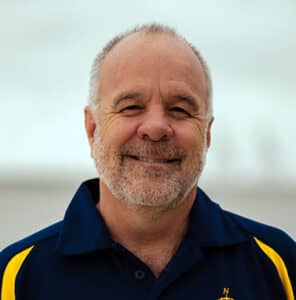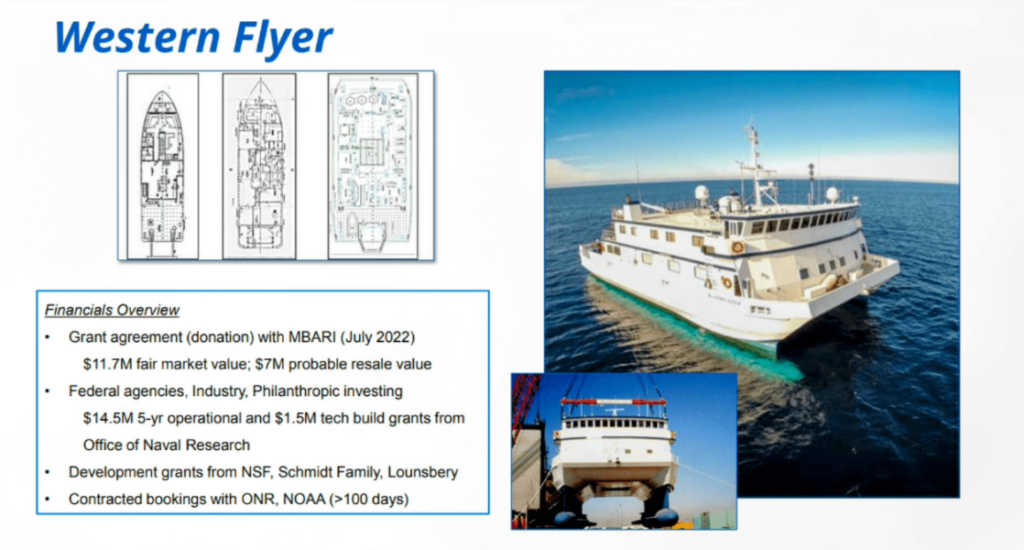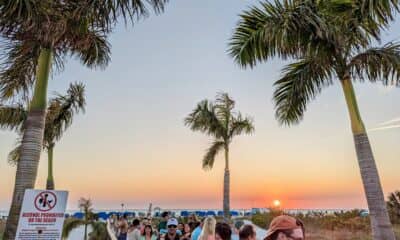Thrive
Research vessel will promote diversity in marine science

An $11.7 million floating laboratory that oceanography officials believe will bolster the area’s blue economy and workforce has made the trek from California to St. Petersburg’s Innovation District.
The renowned Monterey Bay Aquarium Research Institute essentially donated the Research Vessel Western Flyer to the University of South Florida St. Petersburg in November 2022. The 117-foot ship sailed down the Pacific Coast and through the Panama Canal before reaching its new home in Bayboro Harbor six weeks ago.
Dr. Monty Graham, director of the Florida Institute of Oceanography (FIO), told city council members that the Western Flyer would support equitable workforce development. While he will formally unveil the ship and its unique programming to local leaders and the community next month, he offered a “teaser” at the June 8 meeting.
“We’ve got research vessels, and we can do research vessels,” Graham said. “But the one thing this country – really the world – does not have is a vessel dedicated to broadening the reach of our workforce.
“If you get into ocean sciences, geosciences in general, they (workers) look a lot like me.”

Monty Graham, director of the Florida Institute of Oceanography.
The FIO is a 32-member consortium that includes several universities, colleges and agencies, like the Mote Marine Laboratory and the Smithsonian Marine Station. The organization also operates its Keys Marine Laboratory “in the heart” of the island chain.
FIO officials focus on four primary areas: Operations, academic support, research support and business engagement. USFSP hosts the Institute, and Graham credited city officials for making his job “quite a bit easier.”
“The way that you embrace ocean science and education in your community is really quite amazing,” he added.
Graham said the university proves the academic framework while the surrounding Innovation District enables the FIO to share expertise with multiple companies and agencies. The Maritime and Defense Technology Hub “has really brought this part of the world to the forefront,” he said.
Graham called the FIO a national and international leader in supporting the blue economy, which includes tourism and recreation, shipping and transportation, commercial and recreational fishing, power generation, research and related goods and services.
The “new blue economy,” a recent Innovation District focus, builds on the previous version by harnessing the power of data analytics.
“I’d also like to emphasize that Florida’s 1.4-plus trillion-dollar economy – every penny of it is touched by the ocean,” Graham said.
The Western Flyer joins two other research vessels docked in the harbor, the R/V William T. Hogarth and the Weatherbird II. Graham previously noted that the latest addition’s significantly greater width provides “incredible” stability.

The Western Flyer (top right) is significantly wider than the FIO’s previous research vessels. Screengrab.
The goal is to bring people unfamiliar with the sea into a more comfortable working environment. He told council members that even in the age of artificial intelligence and remotely operated vessels, there is no substitute for taking students into the ocean and getting their feet wet.
While the FIO works to mitigate “existential” issues and supports economic development, it is also increasing its educational offerings.
“We don’t just limit ourselves to STEM (science, technology, engineering and math) anymore,” Graham said. “Now we’ve added the ‘A.’”
The “A” stands for art, and Graham illustrated his point by showing a group of students encompassing journalism, humanities and various art majors from five universities on a research vessel. He said the trip was to show them how communities and the sea intersect.
Graham plans to increase participation among historically underrepresented groups through the Western Flyer. He noted the need became apparent during the 2010 Deepwater Horizon oil spill.
“Scientists came in and said, ‘You communities are going to do certain things. You can’t fish here; you can’t do this,'” Graham relayed. “It’s all based on science, but the communities themselves had a hard time trusting that science because the scientists didn’t look like them.”
Following six weeks of repairs and refurbishments, the Western Flyer – and the FIO and its Innovation District partners – are ready to help mitigate that issue. Graham said the goal is to utilize the ship and its technology and programming to foster a new generation of marine experts who better reflect the most vulnerable populations.
“So, we’re excited to have it here,” Graham added. “And on July 12, we’re really going to unveil the ship to everybody.”







